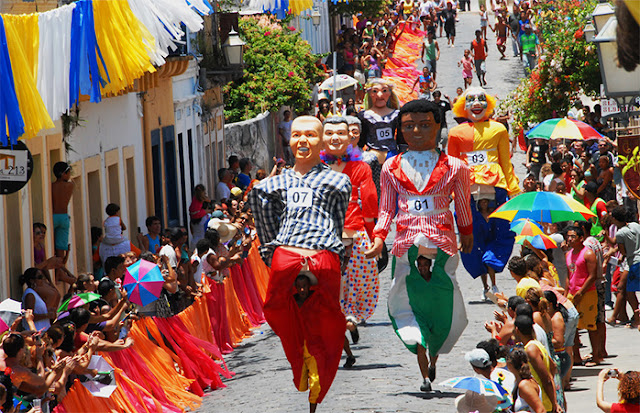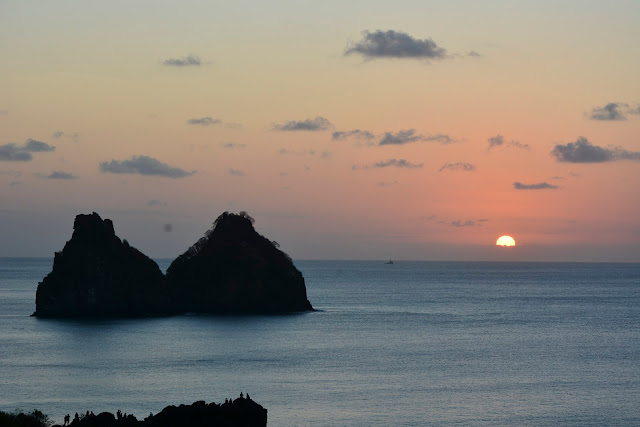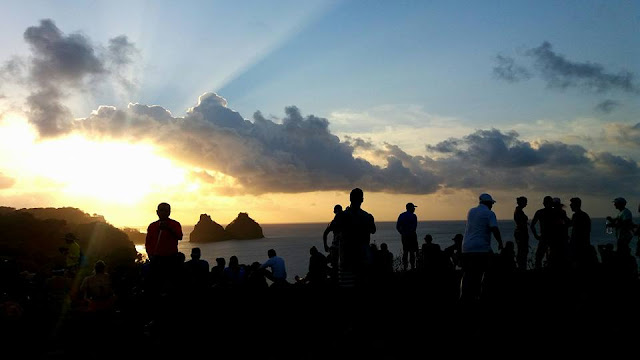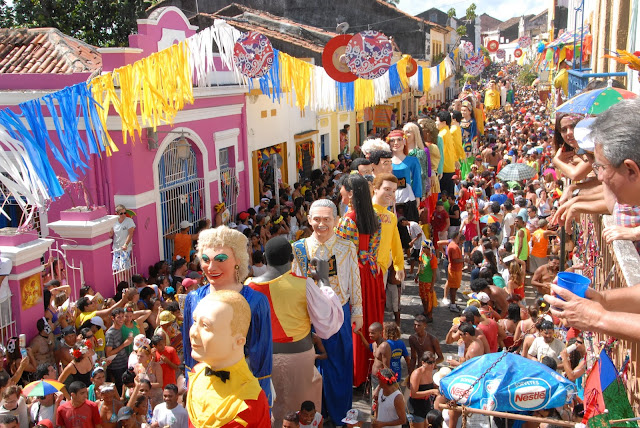The most pictures here from google
It is a city in the north-eastern Brazilian state of Pernambuco. It's set around a tree-covered hill 6km north of Recife.
Olinda features a number of major tourist attractions, such as a historic downtown area (World Heritage Site), churches, and the Carnival of Olinda, a popular street party, very similar to traditional Portuguese carnivals, with the addition of African influenced dances. In Olinda, admission to Carnival is free. All the festivities are celebrated on the streets, and there are no bleachers or roping.
There are hundreds of small musical groups (sometimes featuring a single performer) in many genres.
The main outlook of the city is the Alto da Sé where you can admire the historic buildings and the ocean. Located here is the Seminary, with its Brazilian Jesuit architecture whilst nearby are the Palace of the Governors, the Contemporary Art Museum and the Eufrasio Barbosa Market.
Besides its natural beauty, Olinda is also one of Brazil's main cultural centers. Declared in 1982 a Historical and Cultural Patrimony of Humanity by the UNESCO, Olinda relives the magnificence of the past every year during the Rio-style Carnival, on the rhythms of frevo, maracatu and others rhythms.
 |
| Frevo dancers |
 |
| Carnival |
The main economic activities in Olinda are based in tourism, commerce, transportation industry and artcraft. The tourist sector has a boom every Carnival when thousands of people are in the old historic town center. (
wikipedia).
With twisting streets of colorful old houses and gorgeous vistas over tree tops, church towers and red-tile roofs, this is one of the best-preserved and prettiest colonial towns in Brazil.
Walking around the cobbled streets, stopping in front of each beautifully colored house, snapping pictures at every corner is very pleasant. Olinda is photographic heaven.
The impressive historical buildings pair well with the cultural diversity of the town which can be seen everywhere, whilst the fabulous lookouts onto the ocean, the handicraft markets and its rich cuisine will delight visitors.
For arts and crafts, Olinda is considered an open air museum bringing together an historic site with more than 80 artists’ studios of national and international reputation whilst throughout the Cidade Alta there are numerous stalls of local artisans selling carvings, sculptures and embroideries.
If you are visiting the north-east of Brazil on holiday then Olinda is a must see.





























